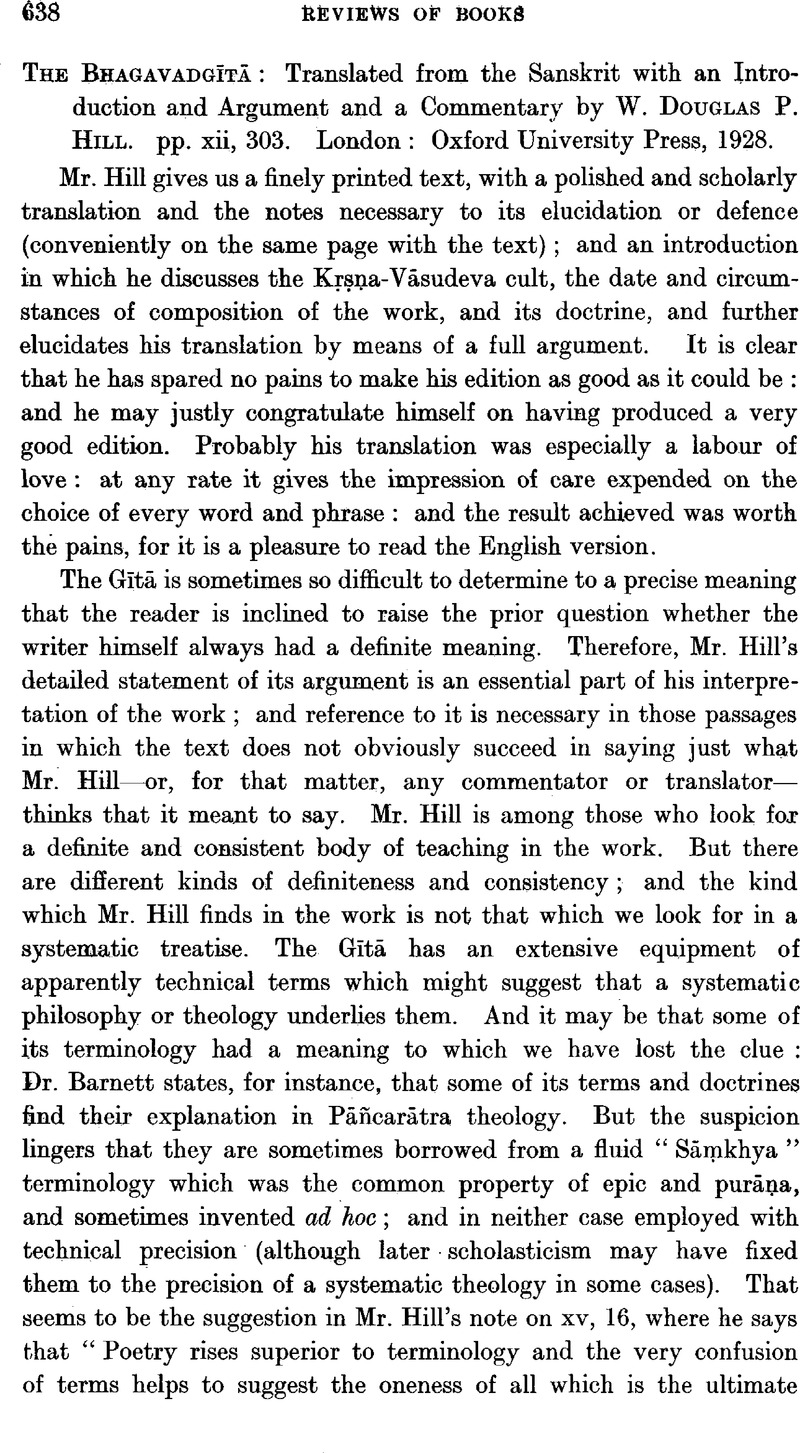No CrossRef data available.
Published online by Cambridge University Press: 24 December 2009

page 639 note 1 The characterization of sukham atyantiham at 6, 21–2Google Scholar, in the words yaṃ labdhvā cāparaṃ lābhaṃ manyate nādhihaṃ tataḥ is precisely parallel with Aristotle&s formal characterization of the Summum Bonum as the Good which cannot be made bigger by adding goods to it. Mr. Hill&s rendering of adhikam by “ more excellent ” conceals the parallelism. The meaning is that there is nothing more to be added to it.